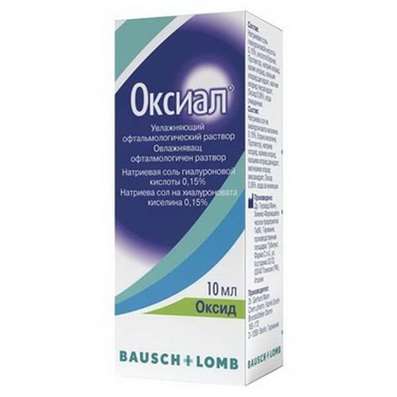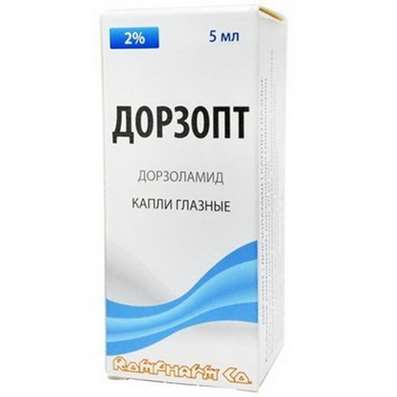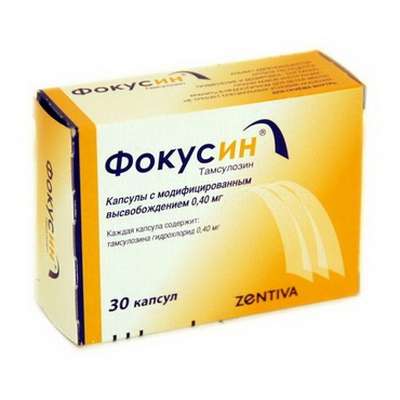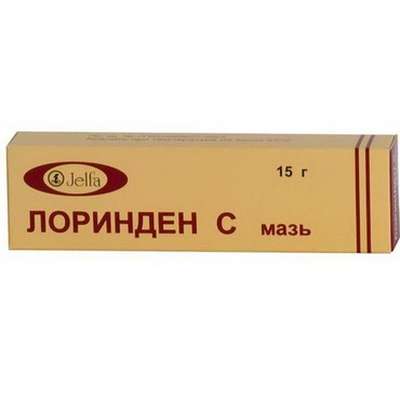Antioxidants
29 Nov 2016
Antioxidants is the oxidation inhibitors, natural or synthetic substances capable to slow down oxidation (are considered mainly in the context of oxidation of organic compounds). Antioxidants allow to protect organs and tissues (including muscles) from the blasting influence of aggressive radicals.
Free radicals (oxidizers) is a metabolism by-product in an organism. In sports practice, at expansion of the perekisny oxidation of lipids (POL) as a result of ultraboundary loads and effect of "external" oxidizers, there are processes of initiation of release of free radicals that promotes formation of toxic products which break function of cellular membranes and biopower mechanisms. Their instability is caused by unbalanced number of electrons concerning a core charge. Such nonequilibrium molecules seek to be restored, having given an excess electron or having torn off lacking from other molecule. In turn, this molecule becomes nonequilibrium and strives for balance, continuing reaction.
The pro-oxidatic system plays a part in maintenance of health, taking part in millions of chemical reactions. Helps to acquire a nutrition and to fight against disease-producing bacteria, funguses and viruses. However influence of an intensive exercise stress, and also adverse factors of the external environment lead to failures of natural mechanisms of control. In this case activity of free radicals sharply increases, affecting with a destructive image an organism. Free radicals can bind together two molecules then the last can't correctly function.
The number of free radicals as avalanche increases at a serious exercise stress, an extreme training, preventing urgent restoration and readiness of an organism for the next training.
Getting out of the control of an organism, the pro-oxidatic system puts noticeable damages: cellular membranes are damaged, cells are blasted or, causing mutations, changes structure of DNA of a cell. Antioxidants stop pathological activity, entering pro-oxidatic system into a regimen of normal functioning, work as converters of free radicals.
Mechanism of action
The mechanism of action of the most widespread antioxidants (aromatic amines, Phenolums, naphthols, etc.) consists in break of reactionary chains: molecules of an antioxidant interact with active radicals with education of low-active radicals. Oxidation is slowed down also in the presence of the substances blasting hydroperoxides (dialkylsulfides, etc.). In this case rate of formation of free radicals falls. Even in a small amount (0,01 — 0,001%) antioxidants reduce rate of oxidation therefore during some period of time (the period of inhibition, induction) products of oxidation aren't found. In practice of inhibition of oxidizing processes the synergy phenomenon — mutual intensifying of efficiency of antioxidants in an admixture, or in the presence of other substances is of great importance.
Features of antioxidatic effect of substances are defined first of all by their chemical nature.
Antioxidants or are immediately bound by free radicals (direct antioxidants), or stimulate antioxidatic system of tissues (indirect antioxidants).
Antioxidants in sport
It is considered that in time and after the training many by-products which can injure muscles and other organs are formed. Free radicals, such as oxygen and nitric molecules attack and damage membranes of cells. Several recent researches showed that antioxidants can reduce the oxidative stress induced by an exercise stress, and also accelerate restoration after the training.
The special attention in bodybuilding is received by vitamins and minerals which act as antioxidants and regulators of a metabolism, helping not only to protect muscles, but also to enlarge their weight.
Researches
The ISSN magazine published the review article of Alves Carnauba, Valéria Paschoal and Humberto Nicastro in 2014 devoted to a question of insufficient validity of reception of antioxidants by athletes. Authors analysed a set of researches for 2006-2013 which concerned studying of various antioxidants (vitamin C, vitamin A, vitamin E, beta carotene and their combinations).
"Attention" 12 researches showed total absence of effect on physiological parameters of an organism of the athlete and activity of antioxidatic enzymes. Thus, authors believe that antioxidatic additives don't influence restoration of muscles after a load and sports results.
The research of 2001 with participation of elite mountain skiers didn't find direct proofs of the blasting action of free radicals, but noted depression of the antioxidatic status at skiers during intensive trainings. Thus, reception of additives can counteract falling of level of antioxidants in an organism and help to enlarge protection of an organism against the increased attack of free radicals.
Found researches of University of Logboro of 2001 that daily reception of vitamin C (200 mg) within two weeks reduces muscular morbidity and improves restoration after an intensive load. The research conducted in 2004 in the USA found out that the women accepting antioxidatic additives before and after a load had significantly less injuries owing to exercises with burdenings. Sports scientists from South Africa established the increased level of immune cells (neutrophils) at runners who accepted antioxidatic additives (vitamin C, vitamin E and beta carotene) after intense two-hour run, in comparison with runners who received placebo.
Body height of muscles
In 2015 the Norwegian scientists estimated influence of reception of vitamin C (500 mg) and vitamin E (117.5 mg) before and after the training within 12 weeks on body height of muscles and power indicators at elderly people (60-81 years). Power trainings took place 3 times a week, on all groups of muscles. In days of rest of additive were accepted in the same doses in the morning and in the evening. As a result it turned out that at examinees who accepted these antioxidants lower gain of muscle bulk was observed, however differences in augmentation of power indicators weren't registered. Scientists assume that the oxidative stress caused by an exercise stress can make an essential contribution to myopachynsis. Do not forget take Koramine for better results.
Nevertheless, in earlier research for 2008 other group of the Canadian scientists established that vitamin C (1000 mg/days) and vitamin E (600 mg/days) cause more expressed gain of dry muscle bulk in elderly people, in comparison with examinees who carried out only trainings.
Doses and regimen of reception
References of the European Union on daily consumption of vitamin C make 60 mg, and for vitamin E - 10 mg. These sizes are considered sufficient for maintenance of health, however they aren't optimum for sports operability or prevention of cardiovascular diseases. A series of scientists considers the norms of consumption accepted in the United Kingdom and the USA too low. In the book "Working Capacity Rising Limit" professor Mel Williams from department of the theory of physical exercises and physical education at University Old the Dominion, the State of Virginia, the USA, advises daily to consume 500-1000 mg of vitamin C, 250-500 mg of vitamin E and 50-100 mg of selenium.
Side effects
Various researches showed that the use of the dietary supplements containing antioxidants raises a mortality, both patients with various diseases, and healthy people, Science Daily reports. The international group of researchers under the leadership of Christian Gluud from University hospital of Copenhagen, Denmark came to the same conclusion.
The products rich with antioxidants
Antioxidants first of all contain in various fresh fruit, and also in products from them made (freshly squeezed juice, infusions and tinctures like cold tea, a fruit drink, etc.). To rich antioxidants to fruit belong: bilberry, grapes, cranberry, mountain ash, black-fruited mountain ash, currant, grenades. All of them have acidic or sweet-sour taste and red (reddish-blue, blue) color. The Brazilian (South American) fruit of asaa — the champion among others well-known the antioksidants of fruit: the cranberry contains asa in 10 times more of antioxidants, than. Red wine, green tea and to a lesser extent black tea are distinguished from drinks.
Additives and drugs
The most known and often applied antioxidants:
- Ascorbic acid (vitamin C)
- Vitamin E
- Alpha Acidum lipoicum
- Melatonin
- Vitamin A
- Bioflavonoids (extract of green tea, Quercetinum, proantotsianidina)
- Coenzyme Q10
- Glutathione
Pharmacological classification of antioxidants
Antioxidants of direct action can be divided into five main categories:
- donors of protons;
- polyenes;
- catalysts;
- traps of radicals;
Donors of protons
Carry substances with an easily mobile hydrogen atom to them. Donors of protons - the most extensive group of the antioxidants which found a medical use.
Phenolums. Phenolic antioxidants effectively suppress reactions the FLOOR, but are practically not capable to protect proteins from oxidizing damage. Efficiency of protection of nucleic acids against oxidizing modification is also low. Main representatives: tocopherols, ionol, probucol, derivatives of Phenolums and naphthols, flavonoids, catechols, Phenolum - carboxylic acids, estrogens, lazaroida.
Nitrogen-bearing heterocyclic substances. The mechanism of action is similar to that of phenolic antioxidants. Main representatives: melatonin, derivative 1,4 dihydropyridines, 5, 6, 7, 8-tetrahydrobiopterine, pyrrolopyrimidine derivatives.
Tiola. Action mechanism dual: tiolovy antioxidants are capable to act both as donors of a proton, and as helator of cations of transitional metals. Are more effective, than phenolic antioxidants, in prevention of oxidizing damage of proteins. Main representatives: glutathione, Cysteinum, gomotsistein, N-Acetylcysteinum, ergotionein, dihydroacidum lipoicum.
Alpha and betadienole. The mechanism of action of the main representative of this group of antioxidants - ascorbic acid is installed. It easily gives protons, turning into degidroaskorbin acid (process is reversible). Ascorbic acid in many cases shows pro-oxidatic properties.
Porphyrins. Action mechanism multiple: donors of a proton, catalysts (in the form of complexes with cations of some metals). Main representative: bilirubin.
Half-yens
It substances with several nonsaturated communications. Are capable to interact with various free radicals, kovalentno attaching them on double communication. Have low antioxidant activity, but the combination to antioxidants - donors of a proton (on condition of higher molar concentration of the last) leads to synergistic strengthening of antioxidant effect of mix.
Main representatives: retinoida (retinal, retinoy acid, Retinolum and its air) and carotinoids (karotina, lycopene, spirilloksantin, astatsin, astaxanthin).
Catalysts
These antioxidants are effective in low concentration. Can be used in small doses, their effect in an organism remains longer, and probability of manifestation of side effect at them low.
Simulators superoxide dismutases (SOD). Highly active and the SOD low-toxic simulators complexes of some nitrogen-containing organic compounds with cations of manganese, iron, zinc, copper, first of all metalporphyrines are.
Simulators glutathione peroxidases (GP). The majority of substances are selenoproteina. Are effective for decrease in intensity the FLOOR.
Traps of radicals
Carry the substances forming in case of interaction with free radicals adducts of the radical nature with a limited reactionary capability to this group of antioxidants.
Typical representatives of traps of radicals - a nitrona, in particular feniltretbutilnitron, effectively connecting superoxidic and hydroxyl radicals.
Helators
Typical representatives are ethylene diamine tetraacetic acid (EDTA), desferocsamin and carnosine.
In medicine most widely use the following groups of antioxidants:
- donors of a proton;
- polyenes.
In practice of sport apply the following antioxidants: vitamins A, C, E, B15, beta Carotinum, selenium.
If the athlete already accepts poly vitamin complexes which part antioxidants are, for augmentation of effect it is possible to recommend to accept antioxidants in addition (including a selenium) in number of 0,5-1 daily doses.
Athletes, trainers not always remember importance of administration of drugs, having anti oxidatic effects, after the wearisome trainings, but they reduce formation of toxic metabolites, reduce their damaging impact on membranes of mitochondrions which are power factory of a cell.
Besides, as antioxidants and antigipoksant apply: actovegin, bemitit (ethylthiobenzimidazole hydrobromidum), dibulin (butylhydroxytoluene), diquertinum, Quercetinum (dihydroquercetinum), dimefosfon, cardionat, mildronat, mildrocsin, derinat (sodium dezocsiribonucleat), sodium Oxubatum, gipocsen (polydyhydrocsifenilentiosulfonat sodium), fridocs, tirilazad, trimetazadin (preduktat), rimekor, mecsidol (ethylmethylhydroxypyridine succinate), neyrobutat (calcium hydroxybutyrate), potassium orotat, Acidum lipoicum, berlition, thioscale, Riboxinum, Inosinum, magnesium orotat, magnerot, solkoserit, cytochrome C, emocsipin, elkar (left carnitine), flacozid.
Considerably reduce oxidatic influence: enzymes, coenzymes (ubikhinon Q10), adaptogens, vegetable pollen, power engineering specialists (glucose, fructose, honey, succinic acid).
Rejuvenation
The opinion is widespread that antioxidants can prevent the blasting action of free radicals on cells of live organisms and by that to slow down process of their aging. Nevertheless numerous results of researches didn't confirm this hypothesis.
Researches of efficiency
Whether help to enlarge antioxidatic additives effectiveness and/or to be restored quicker?
Almost all works investigating influence of antioxidatic additives on sports effectiveness didn't find their advantage. It was so shown that vitamin E doesn't influence endurance of swimmers, professional cyclists, marathon runners, students athletes and inactive people. Besides, researches with use of complexes of vitamins E, With, coenzyme Q10, other vitamins and mineral salts also didn't find their impact on effectiveness of the runners, triathletes, football players, athletes training endurance and super hardy runners.
Moreover, some researchers showed that antioxidatic additives can be harmful to athletes. It was shown that vitamin E reduces force of muscles, vitamin C slows down rate of running dogs and weakens efficiency of physical trainings. Besides, as they reduce production AFO (active forms of oxygen), additives with vitamin C interfere with process of restoration after exercises that can exert negative impact on sports effectiveness in the future.
Various researches yielded contradictory results concerning influence of antioxidatic additives on restoration processes.
Some researchers reported that additives with vitamin C and/or E can protect cells, from the damage caused by exercise, to reduce inflammatory reaction to physical exercise and to interfere with loss of an animal force. However, appreciable effects of impact of antioxidatic additives on markers of muscular damage, an inflammation and post-training muscular pain (delayed onset muscle soreness) weren't found in other researches. It is probable that the educated increased quantity of AFK in days after intensive physical exercises isn't involved in mechanisms of depression of muscular functions and morbidity of muscles. On the contrary, AFK can play the important mediated role in restoration and protection of cells against future damage.
It can mean that use of antioxidatic additives during this period can limit adaptation of an organism to physical activity. It is interesting area for future researches.
Whether improve antioxidatic additives health of athletes?
Though there are data confirming that consumption of antioxidatic additives can reduce the oxidizing stress caused by physical exercises there are no data proving advantage of such additives for health. The important question of this discussion, consists in complexity of determination of level of an oxidizing stress and the subsequent judgment of results of these measurements in relation to health of the person. Really, measurement of an oxidizing stress is difficult process which isn't available everywhere. For example, the doctor can't request measurement of level of an oxidizing stress in clinical unit of the hospital. Such measurements are usually taken in research laboratories. The set of techniques by means of which estimate the level of an oxidizing stress is involved in such researches. They include measurement of concentration of by-products of oxidation of lipids, proteins and DNA, and also assessment of antioxidatic capacity of an organism. There are also doubts concerning accuracy and reliability of many of these techniques. Besides, use of biomarkers of an oxidizing stress everywhere isn't accepted. The majority of the perspective researches studying dependence between the level of an oxidizing stress and the beginning of a disease didn't show close connection between them. Therefore though antioxidants also reduce the level of the oxidizing stress caused by physical exercises, now we don't know whether it will bring benefit for health in the future.
Two recent researches showed that antioxidants can suppress effects of physical exercises, useful to health. Ray with coauthors (2009) showed that the combination of vitamins C, E and α-Acidum lipoicum of acid dulled positive effects of a training on vasodilation (vasodilatation) and lowering of blood pressure at elderly people with a moderate hypertonia. Ristous coauthors (2009) found out that additives with vitamins E and With make negative impact on positive effect of exercises concerning sensitivity to insulin. Considering that the blood pressure and sensitivity to insulin are risk factors of cardiovascular diseases, these researches showing that antioxidants reduce advantage of physical exercises are far from the proof of usefulness of antioxidants for health of the athlete. These two researches are the strongest arguments against use of antioxidants in sport, positioned as useful additives to a diet of athletes.
The current references on optimization of a delivery
Summing up the result of the aforesaid, it is possible to conclude that there are no sufficient bases yet to recommend antioxidatic additives to athletes who consume the recommended quantity of alimentary antioxidants together with a daily nutrition. Antioxidatic additives don't improve physical activity. There are data that they can be useful at restoration after the training though in this direction additional researches are required. Also there are no bases to claim that antioxidatic additives will bring benefit to health of the athlete. Moreover, we have data of researches that antioxidants can seriously break processes, useful to health, in which AFK, such as lowering of blood pressure and augmentation of sensitivity to, to insulin therefore it would be reasonable take part treats antioxidatic additives with care. Physically active people should optimize the nutrition. They have to consume the products rich with natural antioxidants, for example fruit, vegetables, whole cereals and nuts. In the listed products, unlike tablets and capsules, antioxidants contain in necessary quantities and proportions. Also they act in common, optimizing antioxidatic effect.
Antioxidatic additives can be required in situations when the person has no opportunity to fill the diet with alimentary antioxidants. In such cases of people can have a specific delivery which can result in deficiency of antioxidants in an organism. And as there are no adequate laboratory tests for definition of need for antioxidants now, the competent sports dietarian can give certain help.
Source: Peternelj TT, Coombes JS. Exercise and oxidative stress: Is antioxidant supplementation beneficial, Sport Health. 2009, vol.27, No. 2, pp.25-28.

 Cart
Cart





